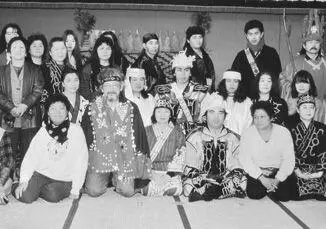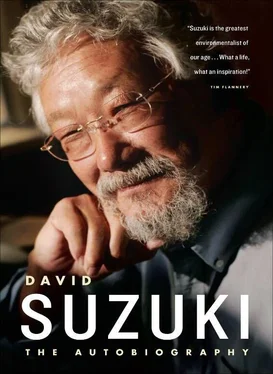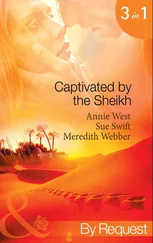The money we had raised from the Alaskan cruise paid for that first mailing. With the help of many volunteers, in November 1990 Tara sent out some 25,000 letters. What a learning curve that was! And then, just before Christmas, checks and cash began to come in, first as a trickle and then as a flood of full mailbags. Harvey said that in his fund-raising experience the returns were phenomenal.
Tara was both thrilled and appalled. It was one thing to pay for things with our own money; once donations were received, the responsibility was enormous. Having no experience in handling charitable donations, she had nightmares of losing track. We were also very aware that people had donated to us with faith that we would use their money effectively to carry out our mandate.
Within months of sending in forty- or fifty-dollar gifts, people were writing to ask what we had accomplished with their money. Our immediate needs were fund-raising software to track donations, computers to run it, and staff to keep all accounting accurate. We also had to increase our base of support by investing some of the funds in wider mailings. But our early supporters naturally wanted their money to go directly to projects that were protecting the environment. We had to come up with a creative solution that would bring quick results while developing the organization.
Tara and I had already been investing our own money to support Barbara Zimmerman, who was working in Brazil with Paiakan and the Kaiapo of Aucre to establish a research station in the Xingu River water-shed, which drains into the Amazon River. The project helps protect a vast, pristine area, so we transferred this project to the foundation.
I had also been introduced to the Ainu of Japan, an aboriginal people who had held on to their culture through 1,500 years of Japanese occupation. Now they were close to losing their language and their last sacred river, the Saragawa. The river was to be dammed to provide energy for industrial development on the northern island of Hokkaido. Many felt the dam was not necessary and that it would threaten the salmon, a totemic species to the Ainu.
I was asked to help raise international awareness of this latest threat to Ainu culture, so Tara and I sponsored a visit to Vancouver by Ainu children and Shigeru Kayano, an elder in his sixties who was the youngest person still speaking the Ainu language. At one point, the Japanese translator broke down and wept as she listened to Kayano recount how he had been treated as a child by the Japanese. The event was packed and brought the audience to tears.
Remembering our experience with Paiakan and the successful protest against the proposed dam at Altamira, we suggested holding a demonstration at the site of the dam on the Saragawa and inviting aboriginal people from other countries. This idea was enthusiastically accepted, and we ended up raising money to send delegations from several British Columbia First Nations communities: Alert Bay, Bella Bella, and Haida Gwaii. This project we also turned over to the foundation.

Wearing my blanket from B.C. First Nations as I am feted by Ainu people in Hokkaido
I had so looked forward to attending the demonstration and was disappointed when the date chosen for it coincided with a meeting of the International Congress of Genetics in Edinburgh, Scotland. I had agreed to be a vice president of the congress and to deliver a talk there, so I missed the gathering on Hokkaido. By all accounts it was a spectacular display as the First Nations from Canada danced and sang on the site of the dam. The event garnered a huge amount of media coverage. Unfortunately, it failed to move the Japanese government; the dam was built a few years later.
We were involved in other projects that became part of the foundation's early stable of accomplishments at little or no cost to the organization. Environmentalists and natives in western Colombia asked for help to protect the rich Choco rain forest, so Tara and I paddled a dugout up the Bora Bora River with a National Film Board crew from Canada to visit the people living in houses built on stilts and to produce a widely distributed program on the issues. In these ways, we demonstrated to our supporters that the foundation was actively engaged in significant projects, buying us time until the board could launch a well-thought-out slate of activities.
Tara had done a heroic job of getting the organization off the ground while learning everything from rules governing charities to board — staff relations, newsletter production, fund-raising techniques, and personnel issues. She had given up a prestigious teaching position at Harvard University to be a full-time volunteer for the foundation, but it took a huge toll. Whether at home or at play, she carried her work with her, an enormous weight of responsibility. I was still running around filming with The Nature of Things with David Suzuki , giving talks in different places, and raising money to support our foundation projects. Tara was stuck day in and day out with the nuts and bolts. She worked long hours, often seven days a week, coming home physically drained and psychologically burdened by worry.
Several times in those first twenty-four months, I told her, “Tara, let's drop it. You gave it a try, but it's just too much work. I can't do my share, and it's ruining your health.” But she stayed with it, something for which I have enormous admiration and gratitude. The foundation became her baby, and she was going to nurture it and see it grow into an effective organization.
Gradually we raised enough money to hire staff. Board members rolled up their sleeves. Soon we could bite the bullet and hire an executive director to give the foundation leadership and get the new, board-directed projects up and going.
We received a number of applications and winnowed them to a shortlist that included Jim Fulton, the Canadian member of Parliament who had tipped me off about the struggle over logging in Windy Bay in Haida Gwaii. Jim had been a probation officer and as a candidate for the New Democratic Party (NDP) had stunned political commentators by wresting the riding of Skeena away from the Liberal cabinet minister Iona Campagnolo.
Skeena is all of northwestern B.C., a vast area the size of France. It's exhausting just thinking about how a politician can work in Ottawa yet serve such a huge riding three thousand miles away. Jim says he missed every one of his kids' birthdays while he was in office. Jim is a larger-than-life character. He is well over six feet tall and has a powerful chest and arms and a belly that could absorb any frontal attack. With his hair and mustache now turned white, he reminds me of those mountain gorilla males called silverbacks; like them, he commands respect by sheer physical presence.
But Jim also has a mischievous air about him, and he has delighted in childlike play both as a politician and as executive director of our foundation. Perhaps his most famous stunt as an mp came when, in an attempt to stop the spread of a virus infecting the sockeye salmon, the federal Department of Fisheries and Oceans had put a barricade in the Babine River, which drains into the Skeena, thus preventing the salmon from reaching their spawning grounds. Jim learned about it and drove to witness the fish smashing repeatedly into the barrier as they tried in vain to move upriver. He captured a large female sockeye, which was dying without reaching the spawning beds to complete her lifecycle. Jim put her in a bag and took her carcass to Ottawa.
There he donned baggy pants, slipped the bag down his pant leg, and smuggled it into the House of Commons. He rose during Question Period to query the minister of Fisheries and Oceans about the sockeye in the Babine, knowing the answers from Erik Nielsen would be bafflegab. As Nielsen waffled, Jim suddenly yanked the salmon out of his pants, splashing slime onto his NDP colleague Margaret Mitchell, who screamed and alarmed the parliamentarians. Jim strode across the floor and slammed the fish onto Prime Minister Brian Mulroney's desk.
Читать дальше



![David Jagusson - Devot & Anal [Hardcore BDSM]](/books/485905/david-jagusson-devot-anal-hardcore-bdsm-thumb.webp)









